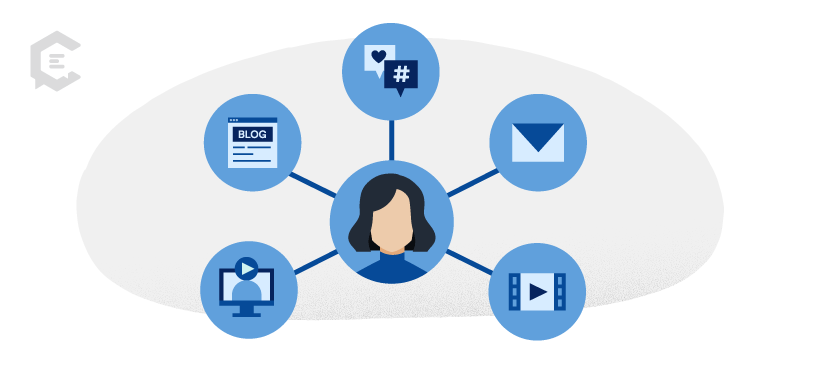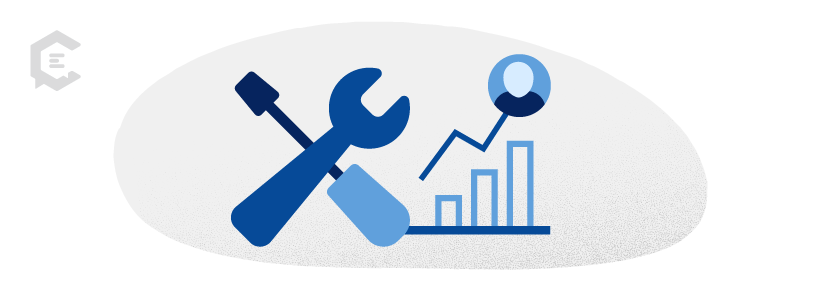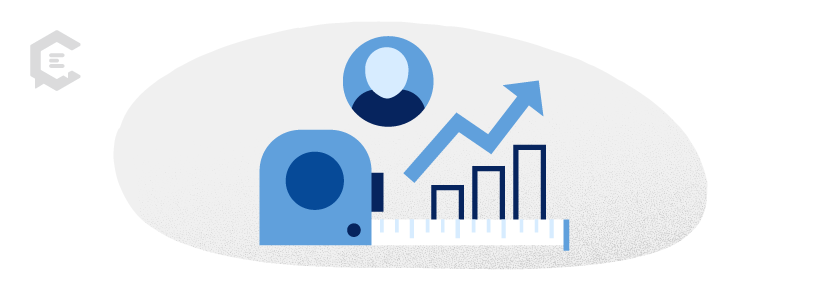Banking has changed — big time. With digitization sweeping through the industry, traditional banks aren’t just competing with each other anymore; they’re up against tech giants who have jumped into the financial game. These companies have a treasure trove of customer data, giving them a serious edge in offering personalized financial products.
But let’s not forget that traditional banks have their own strengths — long-standing customer relationships and a deep well of product expertise. The challenge now is to tap into that data and use it to create hyper-personalized campaigns that really connect with customers.
Broad, one-size-fits-all marketing just won’t cut it anymore. To stay competitive, banks need to get laser-focused on customer needs and leverage data-driven personalization to engage and retain their audience. This article helps to break down how data-driven baking campaigns drive success with personalization at scale.
The Power of Data-Driven Personalization in Banking
Customers want to know they’re unique and not just a number on an account list. Personalization is no longer just an option for banks; it’s essential if they want to retain market share.
Why Personalization Matters in Banking
Customers expect more than generic marketing messages. They want experiences that are tailored to their specific needs and preferences. This is especially true in the banking sector, where personalized interactions can significantly enhance customer loyalty and engagement. According to Deloitte, 90 percent of customers find personalized advertising appealing, underscoring the importance of personalization in driving customer satisfaction and business growth.
However, achieving true personalization is not without its challenges. The banking value chain has evolved, making it harder for traditional institutions to offer the personalized experiences that customers now demand. Simply mimicking the offerings of digital banks or other fintech players is not enough. Banks must go beyond superficial tactics and integrate customer intent into their marketing strategies to deliver meaningful, personalized experiences.
Customers want that golden age of banking experience where their needs are known and anticipated, and the products and services make a difference in their financial journey. A recent Accenture report stresses that a traditional value chain will stunt the bank’s growth and that customer intent is an integral layer to add to the value chain.
The result?
- Increased revenue with lower spending: Banks can now drill deeper into customer intent, which means broad-based marketing is no longer required.
- Successful customer retention: It’s far more cost-effective for banks to retain their customers than to attract new ones. Successfully identifying and anticipating needs ensures that banks pose a product or service recommendation to their existing customer base before they start looking around. For customers, this increases their engagement.
- Opportunity for cross-selling: The more products banks can sell to an existing customer, the more entrenched the customer becomes with the brand. This increases loyalty and conversions.
The Role of Big Data and Advanced Analytics
Banks already have tons of information at their fingertips, but wading through the ocean of data can be cumbersome and costly. With the help of big data and advanced analytics, banks can gain insights into important customer metrics.
Understanding Customer Behavior
Analyzing customer behavior, such as time spent on specific pages or completion rates of online forms, provides valuable insights into customer satisfaction and potential barriers to engagement. By leveraging data from customer relationship management (CRM) systems, banks can better understand customer sentiments and tailor their offerings accordingly.
Identifying Customer Preferences
Sentiment analysis and customer feedback can reveal valuable insights into what customers like or dislike about a brand. This information allows banks to promote relevant products and services at the right time, enhancing the overall customer experience.
Anticipating Customer Needs
A needs analysis helps banks identify where customers are in their financial journey and which products or services are most relevant. In a digital environment, real-time data from business intelligence tools can provide a more accurate understanding of customer needs, allowing banks to offer timely and relevant solutions.
Collection and Analyzing Data or Hyper-Personalization
Banks already have vast amounts of data, but knowing how to extract and utilize this data is key to achieving hyper-personalization. By tapping into various data sources — such as account information, transaction history, and online behavior — banks can create comprehensive customer profiles that inform their marketing strategies.
Key sources of customer data:
- Account information: Customer preferences in terms of financial products, plus their financial health
- Customer demographics: Customer segmentation and grouping
- CRM data: Personalized marketing and customer user experience
- Transaction data: Customer spending habits and product preferences
- Online and mobile banking data: Understand digital behavior and improve user experience
- Service resolution data: Customer concerns and service quality
- Customer interactions and feedback: Customer satisfaction levels and pain points
- Product application data: Understand customer creditworthiness, needs, and risk levels
- Third-party information: Used in conjunction with existing client info to create a complete customer profile
Best Practices for Analyzing and Utilizing Customer Data
While it’s one thing to access all that data, knowing what to do with data will make all the difference.
Effectively analyzing customer data is critical to creating hyper-personalized campaigns. A Customer Data Platform (CDP) can help banks centralize and secure data, enabling real-time analysis and more accurate customer segmentation. Machine learning and predictive analytics further enhance these efforts by identifying patterns and predicting customer behavior.
Key Benefits of Advanced Analytics:
- Data Integrity and Security: Ensuring compliance and accuracy in data handling
- Segmentation and Clustering: Grouping customers based on behavior and demographics
- Customer Journey Mapping: Understanding the customer lifecycle and pain points
- Reporting and Insights: Gaining actionable insights for continuous optimization
Use Predictive Analysis and Machine Learning
Machine learning and predictive analytics provide the banking industry with tools that can help them leverage their personalization game. According to IBM, these tools offer:
- Which customers are likely to default on a loan
- The risk levels of different customers
- Which customers are most likely to drive revenue through targeted resources and marketing spend
- Possibly fraudulent spending
Implementing Hyper-Personalization Across Channels
Once banks have gathered and analyzed the necessary data, the next step is to implement hyper-personalized campaigns across multiple channels. Whether through email, social media, mobile apps, or websites, the goal is to deliver consistent, relevant messaging that resonates with individual customers.
Personalized Content Across Channels
- Email: Tailor your content to match the demographics of your target market. Use dynamic content to personalize your letters and set up automated emails triggered by specific customer behavior. For instance, if a customer expressed interest in a card product, send a reminder email to remind them to take up the offer.
- Social Media: These platforms allow banks to engage in real-time, address service delivery queries, and capture customer feedback for future use. Engage with your audience where they’re at and harness their content for your own benefit.
- Mobile Apps: Mobile apps allow for personalized messaging through push notifications tailored to the customer’s profile. Banks can also localize their offerings based on the location of their customers.
- Websites: Track user behavior and guide them to pages similar to the ones they’ve viewed. You can also include a chatbot to encourage user interaction while onsite.
While all these channels can serve your brand and help you hyper-personalize your content, it’s important that the message remains cohesive and compliant and that you’re continuously testing the outcome to get the most out of the content.
Tools and Technologies for Hyper-Personalized Banking Campaigns
A variety of tools and technologies are available to streamline the personalization process, from CDPs to predictive analytics and marketing automation platforms. These tools not only facilitate data collection and analysis but also enable banks to deliver personalized content at scale, ensuring consistency and relevance across all customer touchpoints.
Technology Solutions for Personalization
- CDPs to collate data from various sources. These include Segment, Salesforce CDP, and Adobe Experience Platform.
- CRM systems to help manage customer interactions and track engagement. These include Salesforce, Microsoft Dynamics 365, and HubSpot CRM.
- AI and Machine Learning Platforms to process large volumes of data, identify patterns, and predict behaviors. These include IBM Watson, AWS SageMaker, and Google AI Platform.
- Data Analytics and Business Intelligence Tools for hyper-personalized campaigns. These include Tableau, Qlik Sense, and Power BI.
- Personalization Engines for personalized content in real-time that offers product recommendations and analyzes digital content across channels. Examples include Salesforce, Optimizely, and Dynamic Yield.
Implementing Automation for Efficiency
When banks start implementing advanced analytics, the data sets grow and can quickly get out of hand. Automation ensures that the information is processed as it comes in and that banks have access to real-time, accurate information. Without automation, these data sets will need to be accessed manually, which can be costly in terms of human and financial capital. Automation helps with:
- Aggregation of data from various sources
- Content personalization at scale
- Consistent and efficient content distribution across all channels
- Continuous and effective optimization
Some examples of how automation can help you streamline personalized campaign execution while maintaining relevance include:
- Automated Push Notifications in Apps: Real-time analysis of the client’s banking profile can help banks recommend products through push notifications. This increases engagement and the possibility of conversions.
- Dynamic Content Creation for Social Media: Banks can create personalized ads for certain demographics and segments. For instance, personalized account offers for professionals.
Measuring the Success of Data-Driven Personalization Efforts
To ensure that hyper-personalized campaigns are delivering the desired results, banks must track key performance metrics. These include engagement rates, conversion rates, customer lifetime value, and net promoter scores, among others. By continuously monitoring these metrics, banks can refine their strategies and make data-driven decisions that enhance customer satisfaction and drive business growth.
Essential Metrics to Track:
- Engagement Rates: Assess customer interaction with personalized content
- Conversion Rates: Measure the effectiveness of targeted campaigns
- Customer Lifetime Value: Evaluate the long-term profitability of customer relationships
- Customer Retention Rate: Monitor the success of loyalty initiatives
- Net Promoter Score: Gauge customer satisfaction and brand advocacy
- Case Studies: Study the use of advanced analytics and the effect on banking, such as Santander using predictive analytics to prevent loan fraud.
Major banks have successfully implemented hyper-personalization strategies, resulting in increased customer engagement and business growth.
Bank of America and Erica
Erica is Bank of America’s virtual AI-powered financial assistant that can provide financial advice and recommendations and create alerts based on customer responses. The result is increased customer engagement.
Wells Fargo and Advanced Analytics
Predictive analytics, used to understand business customers’ needs, helps Wells Fargo identify the service delivery loops in its business banking portal.
Create Your Hyper-Personalized Banking Campaign Today
With the right content strategy, you can use a range of curated tools to create hyper-personalized banking campaigns. Know what data to harness, how to make the most of the data on hand, and how to implement your chosen campaign. When you’re done, be sure to monitor the results to ensure you remain on track or pivot when necessary.
Without leveraging data-driven insights and advanced analytics to create hyper-personalized banking campaigns, you may miss out on an opportunity to drive customer engagement and business growth. Your competitors are already doing it, and so should you.
Connect with a content strategist to discover how campaign solutions can meet your content needs.











